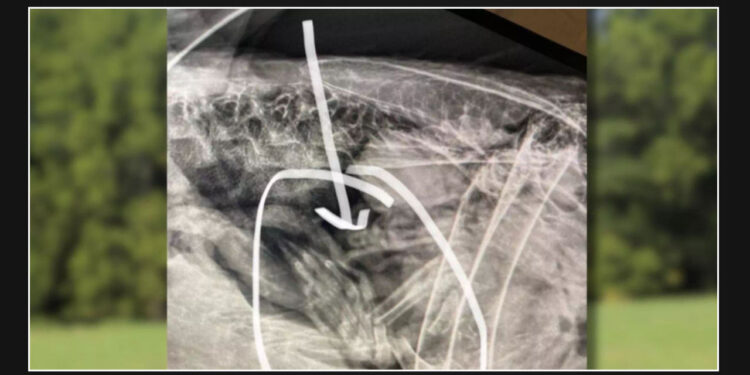Images of an eagle x-ray have recently surfaced on the internet, leaving viewers in awe.
Bald eagles hold the distinction of being not only our national bird but also one of the sources of pride for New York State. However, it wasn’t always this way.
Bald Eagle Populations in New York
This Article Includes
Bald eagles in New York have experienced a remarkable resurgence. The ban on chemicals like DDT has led to a significant increase in their populations nationwide. As a result, the species’ status in states like New York has been downgraded from “endangered” to “threatened.” However, there was a recent incident where one eagle faced a different kind of threat.
An eagle stands confidently in a field beside a sizable dog carrier.
Reports of an Injured Bald Eagle
The National Parks Service (NPS) received a report from a concerned citizen about an eagle that appeared to be unable to fly. This led the NPS to suspect that the majestic bird might be injured. However, upon closer examination, it was discovered that the issue was not as grave as initially thought. In fact, it turned out to be quite amusing.
A Bald Eagle Was “Too Fat to Fly”
According to the National Park Service (NPS), the bird, which was initially thought to be injured, was discovered to be in good health. However, it was found to be excessively overweight, making it unable to fly. The NPS shared that X-rays revealed what appeared to be a raccoon foot inside the eagle’s stomach.
An X-ray of a bald eagle has revealed what appears to be a raccoon foot in its stomach.
According to the NPS, the working theory suggests that the eagle’s inability to fly was a result of consuming an excessive amount of raccoon roadkill. This caused its stomach to become distended and its body to become heavy and non-aerodynamic. Fortunately, after allowing the bird to properly digest its meal, rehabilitators were able to safely release it back into the wild.
Do Bald Eagles Really Eat Racoons?
It might come as a surprise to New Yorkers that bald eagles have a taste for raccoons. Although these majestic birds primarily feed on fish, they have been observed consuming smaller mammals and reptiles, including rabbits, snakes, turtles, and yes, even raccoons.

